Click on images to enlarge
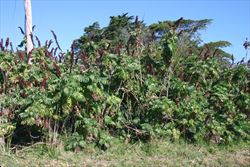
infestation (Photo: Trevor James)

habit (Photo: Sheldon Navie)
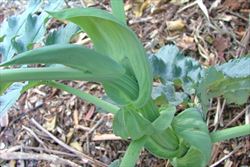
stem with leafy stipules at the bases of the leaves (Photo: Sheldon Navie)
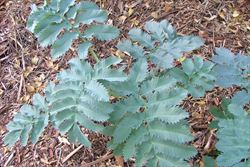
the large bluish-green once-compound leaves (Photo: Sheldon Navie)
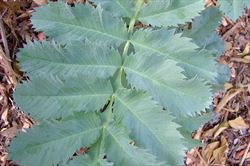
close-up of leaf showing toothed leaflets (Photo: Sheldon Navie)
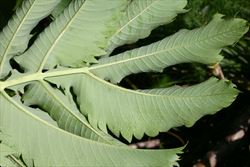
close-up of leaf underside (Photo: Trevor James)
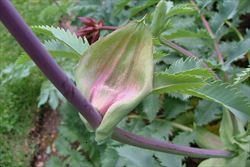
close-up of flowering stem with large bract (Photo: Sheldon Navie)
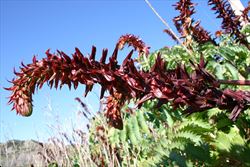
flower cluster (Photo: Trevor James)

close-up of flower (Photo: Trevor James)
Scientific Name
Melianthus major L.
Family
Melianthaceae
Common Names
Cape honey flower, Cape honey-flower, Cape honeyflower, giant honey flower, honey bush, honey flower, honeybush, honey-flower, honeyflower, large honey flower, peanut butter plant, tall honeybush, touch-me-not
Origin
Native to south-western Africa (i.e. Cape Province in South Africa).
Naturalised Distribution
Naturalised in many parts of southern Australia (i.e. naturalised in the coastal districts of central New South Wales, in southern Victoria, in south-eastern South Australia and the coastal districts of south-western Western Australia). Also naturalised on Lord Howe Island and sparingly naturalised in south-eastern Queensland.
Naturalised overseas in New Zealand and south-western USA (i.e. California).
Notes
Cape honeyflower (Melianthus major) is regarded as an environmental weed in Victoria and South Australia.

